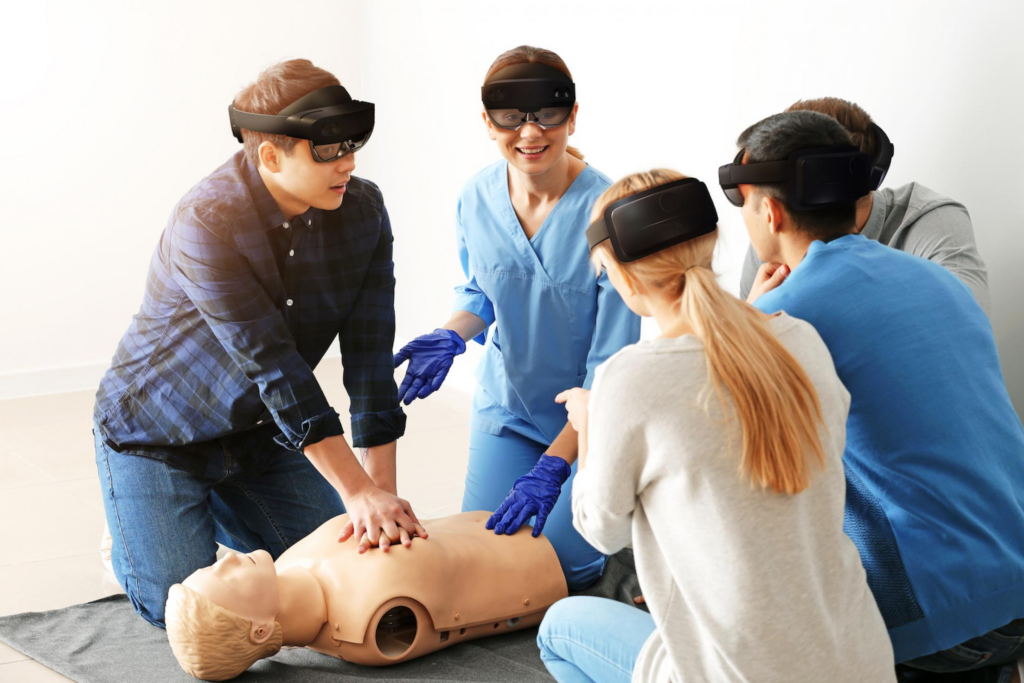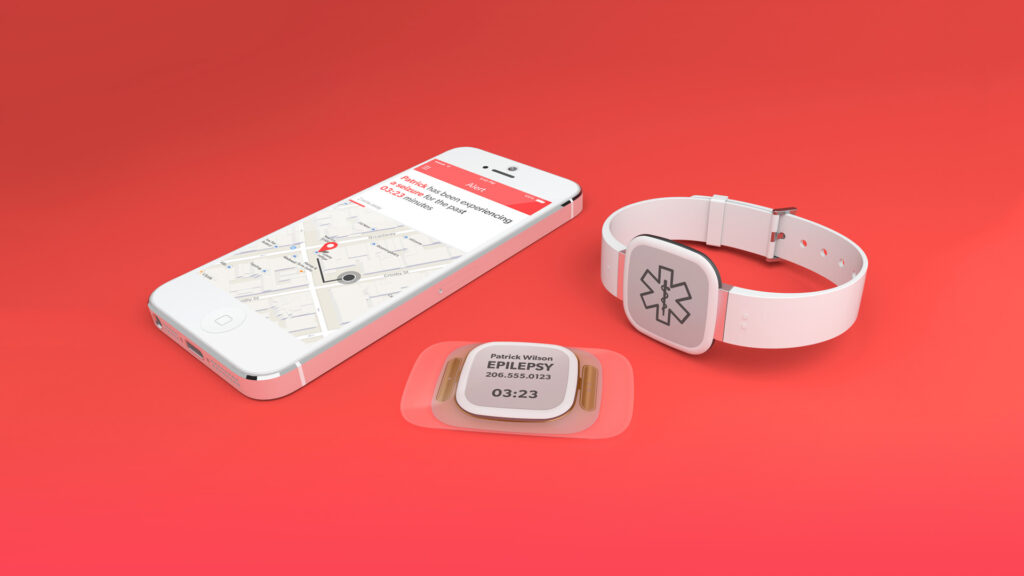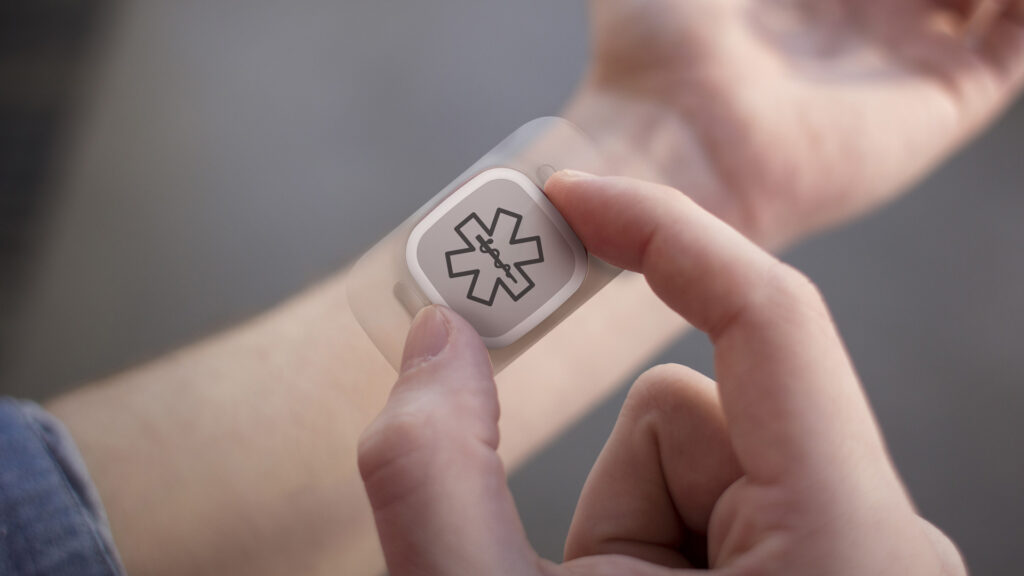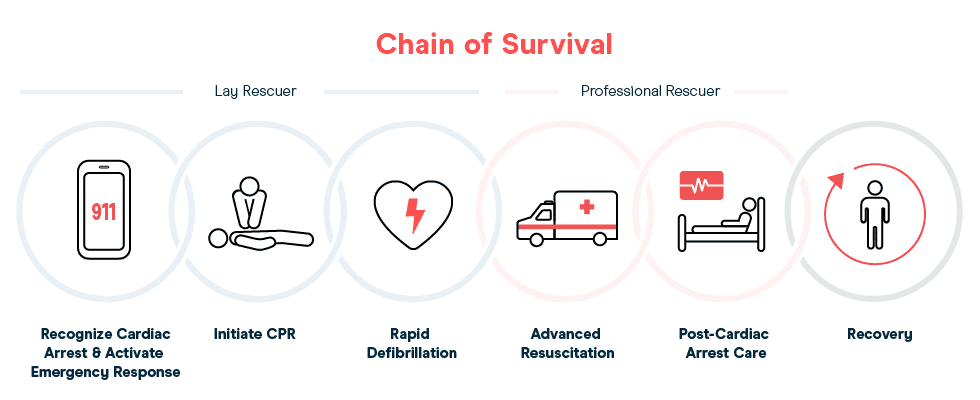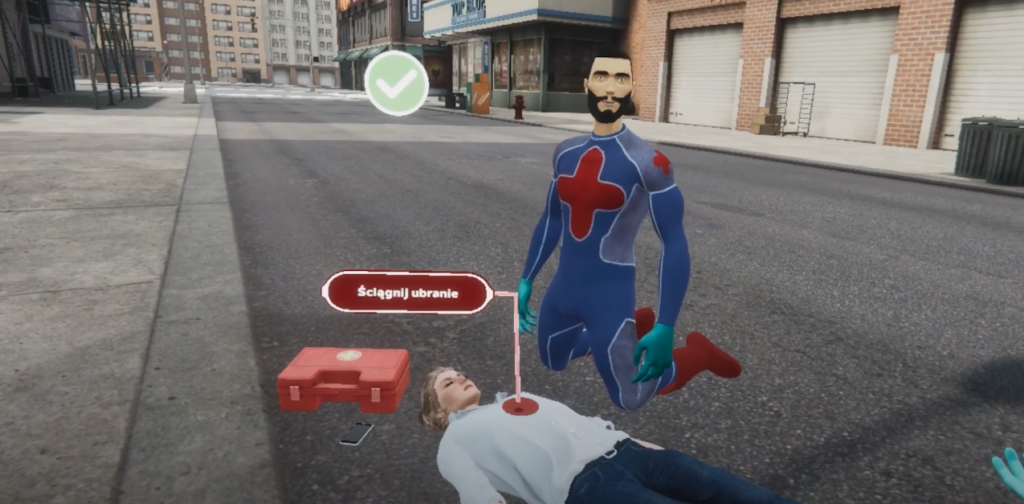The present master’s thesis „Designing User Experience in eHealth Applications for Young- Age Epilepsy“, submitted by Pietro Lentini at the Politecnico di Milano in the study year 2021/2022, deals with the needs and pain points of parents with children with epilepsy. Furthermore, the mobile application MirrorHR for epilepsy self-management was studied and the function for a new remote monitoring scenario was designed using a prototype.
The author formulated the following research questions: Why do parents of children with epilepsy use a self-management app for epilepsy? Which are their needs? Which are their pain points? How is the usability of MirrorHR? Are there aspects to improve? Considering the seizure detection feature in MirrorHR, are there new remote monitoring scenarios for children that the users would be interested in?
Level of design
The present work focuses primarily on background research using semi-structured qualitative interviews and a post-interview anonymous questionnaire. Nevertheless, the results of this study led to a practical prototype that was subsequently evaluated.
The work can be divided into the following five phases. It starts with the analysis of relevant literature, design principles and frameworks, case studies and the state of the art at that time. Second, the author investigated user needs and scenarios by conducting a user study on the MirrorHR application. It continues with the actual development of a prototype for a specific remote monitoring scenario. This is followed by a user evaluation of the study results and the prototype, and finally leads into a discussion section.
Degree of innovation
As the author notes, the existing MirrorHR app faces several challenges due to the fact that it is still a work in progress. One major challenge is the monitoring feature, which at the time only supported a short-range connection between a wearable and a smartphone. However, no usability study or user needs analysis was carried out.
It is stated that not only this app, but epilepsy self-management applications in general can benefit from the insights into user needs and pain points provided by this work. The examined scenario could be helpful for other mHealth applications focusing on children.
Independence
In addition to the literature review in the first part, the author attempted to verify his goals by applying relevant methods in the user study as well as in the design and evaluation of a prototype. This shows a high degree of independent work.
Outline and structure
The contents seem well structured and transparently organized, making it easy to navigate to specific parts of the chapters. Interestingly, the table of contents begins with a list of all figures, tables, abbreviations, and acronyms; followed by the chapters; and ends with the comprehensive appendices of interviews, questionnaires, findings, and prototype.
The chapters of this thesis show the following intended purposes: The relevant literature to get the context of the thesis, design frameworks and principles that have been used, reviewed case studies and the state of the art are shown in Chapter 2. It is followed by the methodological choices and how they have been applied in Chapter 3. Chapter 4 summarizes the results and analyses, leading to a discussion of the contributions and limitations of the studies in Chapter 5. The work concludes with a summary of all conclusions in Chapter 6.
As this research has been carried out at an Italian university, some of the fundamental parts of the study are only available in Italian. However, the entire written thesis is available in English.
Degree of communication
Although the topic of the thesis is mainly scientific, the author manages to write in a low- threshold and easy-to-understand language instead of complicating the readability with super-scientific language. Thorough definitions and background knowledge are provided in various subject areas to ensure that non-experts can follow the scientific explanations. All abbreviations and acronyms are listed in the Table of Contents, and transparency is provided
through attached interview transcripts and email communications. A discussion chapter shows the difficult circumstances and limitations under which this work had to be developed.
Scope of the work
The objectives of this thesis lies in understanding the motives of parents of children with epilepsy to choose self-management apps for epilepsy. This was done by examining user needs and pain points. Furthermore, the usability of the MirrorHR app, which is supported by the FightTheStroke Foundation, was evaluated and a specific monitoring scenario for this application was investigated.
Orthography and accuracy
There are no spelling or grammatical errors that might indicate careful proofreading. Specific terms are used correctly and are defined. The presentation of information is shown in correct citations and a structured list of sources, in accordance with academic standards. Methodology is adequately explained and documented at the end.
Literature
The present list of references appears to be well researched in a wide variety of scientific and industry media. This diversity includes official ISO definitions, specialized books and journals, reviews, web addresses, guidelines and scientific articles. The subject areas vary between medicine, healthcare, human-computer interaction, user-centered design, technology and behavioral sciences.
Conclusion
Taking into account the previous paragraphs, it can be stated that this master’s thesis makes a meaningful contribution to a very specialized field of application. It shows a high level of independent work to investigate the needs and concerns of parents with children with epilepsy and focuses on the evaluation and improvement of the MirrorHR application. Outline and structure are well organized and comprehensible. The written text is easy to understand and well thought out. Citations and references are in accordance with the appropriate scientific standard, and the appendices show great transparency. Finally, the author discusses the limitations of the studies, the implications of the Covid-19 pandemic and provides an outlook for future research.
Resources
Pietro Lentini. Designing User Experience in eHealth Applications for Young-Age Epilepsy. Retrieved October 29, 2024, from https://www.politesi.polimi.it/retrieve/8610722f-1401-487e-8fae-aee491ea275f/2022_12_Lentini_01.pdf
